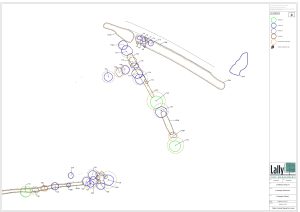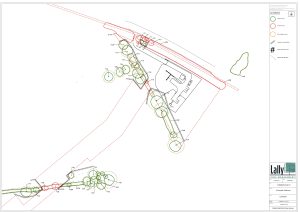The Importance of Tree Management in Urban Environments
In the ever-evolving urban landscape, the preservation of green spaces and trees has become a paramount concern. As cities expand and development projects take shape, the importance of Arboricultural Impact Assessments (AIAs) has gained prominence, serving as a vital tool in maintaining a delicate balance between progress and environmental sustainability.
Arboricultural Impact Assessments: A Vital Tool for Tree Preservation
AIAs are comprehensive evaluations conducted by qualified arboriculturists to assess the potential impacts of development on trees. This proactive approach is fundamental in safeguarding the health and longevity of urban trees, recognizing their ecological, aesthetic, and social contributions.

Understanding AIAs: A Comprehensive Evaluation
In the UK, planning authorities increasingly require developers to undertake AIAs as part of the planning process. These assessments involve a thorough examination of the site and its surroundings, considering factors such as tree species, age, condition, and significance in the landscape. Once an assessment has been completed, a Tree Schedule is created outlining all the tree data collected, this is used in conjunction with the Tree Constraints Plan which outlines the trees locations on a map, the size of the trees crowns and the size and of the root protection areas. The proposed development plans are then overlaid onto the tree constraints plan to see what impacts there are on the existing trees. These impacts are discussed in the Arboricultural Impact Assessment and a Tree Protection Plan is created which outlines which trees are to be retained and how these trees will be protected.

The AIA Process: From Assessment to Protection
By identifying the potential impact of proposed developments, AIAs provide a basis for informed decision-making, ensuring that the benefits of urban trees are not sacrificed for progress.
Minimising Negative Impacts: Protective Measures and Tree Planting Strategies
One of the primary goals of AIAs is to minimise the negative effects of development on existing trees. This may involve incorporating protective measures, such as exclusion zones to shield trees from construction-related stressors. Additionally, AIAs often recommend suitable tree planting strategies to enhance greenery within the developed area, contributing to the creation of healthier, more sustainable urban environments.
Community Engagement: A Key Component of AIAs
Beyond the technical aspects, AIAs play a crucial role in fostering community engagement. By incorporating public opinion and local knowledge into the assessment process, these evaluations ensure that the values and preferences of the community are considered. This inclusivity not only enhances the quality of decision-making but also promotes a sense of ownership and responsibility among residents.
The Future of AIAs: Ensuring a Greener Tomorrow
In essence, Arboricultural Impact Assessments in the UK are emblematic of a holistic approach to urban development—one that cherishes the green fabric of our cities while embracing progress. By systematically evaluating and mitigating potential impacts on trees, AIAs pave the way for a future where urban landscapes thrive in harmony with nature. As the demand for sustainable development intensifies, the role of AIAs in preserving the UK’s urban greenery is destined to become even more pivotal.

